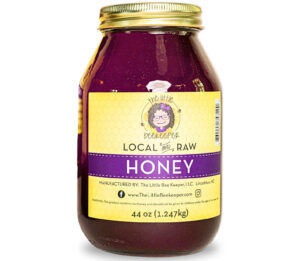In the world of beekeeping, few mysteries are as captivating as the rare appearance of purple honey. Found almost exclusively in the hives of North Carolina, this shimmering honey has fascinated researchers, hobbyists, and culinary enthusiasts for decades.
The phenomenon remains rare and unpredictable. Purple honey appears only intermittently and in limited hives, with no clear pattern. Its deep, iridescent hue has sparked countless theories, as both academic researchers and seasoned beekeepers search for an explanation.
Some longtime beekeepers attribute the color to bees feeding on local fruits such as blueberries or huckleberries. However, NC State professor John Ambrose disagrees, noting bees lack the ability to pierce fruit skins. Instead, he proposes that higher aluminum levels in regional nectar may react with the acid in bees’ stomachs, altering the honey’s color.
Folk theories remain strong. Beekeepers in Dunn, for instance, blame wild grapes after spotting bluish tints in their hives. Others argue the culprit is the nectar of kudzu, the fast-growing vine common across North Carolina. In the eastern part of the state, another theory centers on the Summer Titi plant, also known as southern leatherwood.
Adding to the intrigue, keepers report that the honey’s vivid purple shade fades to brown over time, with its distinctively sweet, almost fruity taste also diminishing.
Despite these clues, no single cause has been confirmed. The honey remains one of North Carolina’s rarest natural products, mostly seen near the Sandhills, where visitors often come for golf at Pinehurst or equestrian activities in Southern Pines—unaware they’re in one of the only regions in the world where purple honey is harvested.
In the Sandhills of NC, bees produce PURPLE honey. It’s the only place in the entire world where this happens. Your Entomology lesson for the day. pic.twitter.com/tWjYerrrRu
— BowTiedBroke (@BowTiedBroke) September 25, 2023
 Purple honey is not only visually unique, but also a coveted delicacy. Many say it tastes sweeter than traditional amber honey, with some describing subtle berry-like undertones.
Purple honey is not only visually unique, but also a coveted delicacy. Many say it tastes sweeter than traditional amber honey, with some describing subtle berry-like undertones.
The mystery bridges tradition and science, showcasing the still-unknown complexities of bee biology and the region’s diverse flora. It is a reminder that even in the age of lab tests and agricultural engineering, nature still holds a few secrets.
As more beekeepers join the effort to track and study this rare phenomenon, North Carolina’s purple honey continues to be both a scientific puzzle and a treasured Appalachian enigma.


